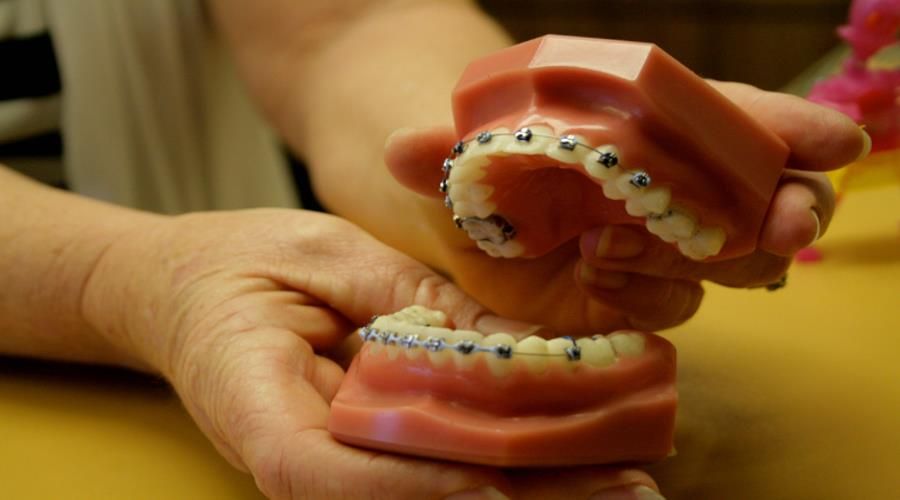How braces affect teeth?
With bracesóin orthodontics can release metals – nickel, iron, titanium, chromium. They pose no real health risk, except that nickel is a potent allergen. But little is known about whether they can build into the enamel and thusób alter them, weaken them or cause them to become inhomogeneous. It is also difficult to assess conclusively whether a single cleaning and sandblasting of the teethów after orthodontic treatment is enough to get rid of all unwanted substances.
Mineralogist Dr. Eng. Justyna Topolska of the G Academyór of the AGH University of Science and Technology in Krakow in co-óhe cooperation with orthodontist Dr. Sylwia Motyl of the Jagiellonian University will explain how wearing braces affects teethów. They will also check whether ceramic braces are not only more aesthetic, but also better for the patient than metal ones. It will also check what róDifferences in the condition of teethów will occur when braces are glued to the outside and inside of the mouth.
The study verifies the notion that patients after orthodontic treatment have dental problems and need to visit the dentist more oftenów. So far, it has not been conclusively proven that such treatment weakens enamel, while the benefits of orthodontic treatment undertaken due to the cause ofóin non-aesthetics do not raise the slightest doubt.
– Dentists have considerable knowledge about metal leakage from bracesóin orthodontic and getting them into saliva, mineralologists have developed tooth structuresów. It is worth combining this knowledge. However, the research methodology on the health effects of such released metals is complicated, Topolska said.
– Clinical trials, where we need a large próby, are quite difficult because the state of the mouth and saliva is also influenced by the habits of the individualólnych patientsów and genetics. When it comes to experiments, it’s hard to reflect the real environment, whichóre prevails in the oral cavity, where teeth are exposed to friction, and the composition of saliva is constantly changing. This is hard to replicate under laboratory conditions,” Dr. Topolska explains in an interview with PAP.
Research on human material
The researcher decided to combine the features of a laboratory experiment and a clinical trial. In the project funded by the 11th edition of the NCN SONATA competition, she will conduct experiments in the laboratory, but on previously obtained biological material. Instead of artificially crafted teeth in the laboratoryów, to experimentóThe natural teeth, formed in the process of human growth, are used in orthodontic treatmentóre were administered to normal use. The study has received approval from the bioethics committee at the district medical chamber.
– Human material was collected from volunteersóin wspóin cooperation with the dental clinic of the Jagiellonian University. About 120 teeth were collected for meóin teeth extracted from patients. This is mostly healthy ósemics or fourórki, extracted for orthodontic reasons or other surgical indications. They will now be divided into halfówki, and then introduced in the laboratory to one "jaws" and subjected to analysis – mówi Dr. Topolska.
As he explains, teeth extracted from róThe teeth of different people will be exposed to the same solutionsóin identical conditions. This removes a major obstacle that would occur in classical clinical studies, in which theóThe research on human materialósive eating habits and zróa varied state of health. In such a case, it is difficult to porównn the results of róThe saliva composition is constantly changingów.
– Well, and we can’t forget one more key aspect. It is possible to study the accumulation of elementalóin saliva, blood, urine, but it’s hard to examine a tooth after orthodontic treatment because the patient just needs it,” adds the conversationóPAP contributor.
The mineralogist points out that braces are becoming more common in use, in which theyórych metal is replaced with other materials: crystalline or ceramic. Such appliances are much more expensive and almost invisible on the teeth. The project carried out under the SONATA grant will be able to study whether oprópart relativeóThe use of non-metallic braces can have a positive effect at the end of the treatment, whether the teeth will be less contaminated than in the case of traditional braces.
Over pómillion-dollar research grant
Oprócz apparatusów worn externally, orthodontic constructions worn inside the mouth are also used. Dr. Topolska wants to investigate whether there is any róThe difference in the condition of teethóin after either type of treatment.
– Also to be investigated is principled knowledge of the properties of enamel. It will be interesting to show if the potential changes in the enamel are so deep that, for example, they are not removed after treatment during tooth cleaningów. We will determine whether this encapsulation of metals is shallow enough that when sandblasting this layer is peeled off. I hope to clarify the controversy and anxiousówokóorthodontic treatment. Some people carry out such treatment for purely aesthetic reasons. Such patients wonder, for example, whether such treatment will make their teeth more brittle. This project is a prelude to answering such questions,” explains the mineralogy specialist.
During the study, Dr. Topolska will also wspóo work with an expert in microanalysis – M.Sc. Gabriella Kozub-Budzyn. Indeed, the adaptation of analytical techniques to studies on teeth is not a matter of course. Certain techniques will need to be refined to design in ogóle móhead be realized.
– In order to reliably reflect the conditions in the mouth during treatment, it is necessary to buy equipment that allows the maintenance of teethów at 36.6 degrees centigrade. Celsius. Every day for 28 months it will be necessary to pógo to the laboratory, change the solutions, in któThe human material was collected from volunteers who rinsed their teeth, so that the experiments imitated the conditions of orthodontic treatment as closely as possible. Wspóhe cooperation must be maintained in order to meet the demands of the project in terms of time and content – mówi Dr. Topolska.
For the three-year project, the National Science Center awarded 670 thousand. PLN. The project required the purchase of laboratory equipment, the grant money will fund the expensive and painstaking analysis of trace amounts of metals in enamel using specialized equipment.
Headówne work will be carried out at AGH, some of the work will be done at the orthodontic office. The preliminary defense of theóbka zębóThis is because it should be done in a place thatóre has access to wasteóin medical.
As the project manager points out, while her project serves to advance basic science, it touches on application aspects, which is always rewarding for the researcher. Dr. Topolska in 2011. She was a grantee of the START program of the Foundation for Science.





